What is Day of the Dead?
The Day of the Dead is a Mexican holiday celebrating All Saints Day. It has been celebrated in Mexico for centuries, even before the Spanish arrived in the country. In fact, native Mexicans had at least six celebrations dedicated to death throughout the year!
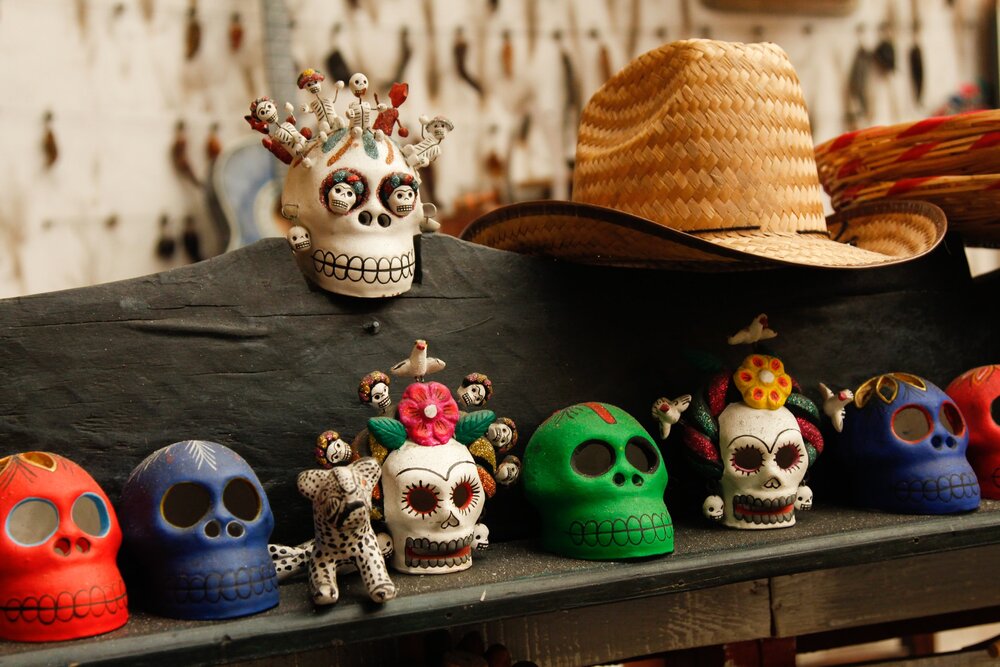
THE DAY OF THE DEAD COLORFUL AND TRADITIONAL SKULLS.When the Spanish arrived in 1519, they didn’t like some of the things they saw at these celebrations — such as the rituals and the human sacrifices. Over time, they managed to incorporate some of their Christian traditions into what was already being celebrated. They also moved the celebration of the Day of the Dead to align with a celebration that they brought from Europe called “Allhallowtide,” celebrated from October 31st to November the 2nd.
How is Halloween different from the Day of the Dead?
In the United States, Halloween is usually celebrated by carving pumpkins and dressing up to go trick-or-treating for candy.
In Mexico, the Day of the Dead is more of a spiritual/religious celebration. Family members visit cemeteries where they clean the tombs of their deceased loved ones. Some cities even host tomb decorating competitions. You’ll also find mariachis (small musical ensembles) playing at the cemetery, tons of food, and a party that lasts through the night. Some people even stay the night at the cemetery.
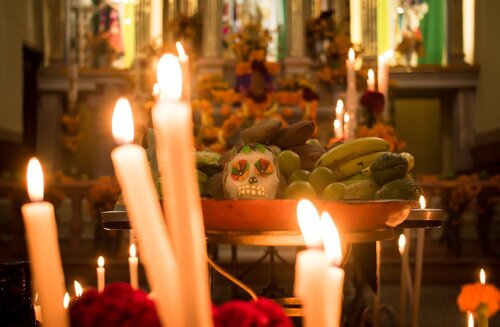
It is believed that the Day of the Dead is a special time where the souls of deceased loved ones have permission to return to earth and spend a few days with their surviving family. That’s why people come to cemeteries or make altars at home dedicated to honor them; it’s a chance to reconnect, give thanks, and find peace.
Altars play an important role in celebrating the Day of the Dead, as they are a space that can be publicly or privately displayed to remember famous figures and dear loved ones alike. An altar often features a photo of the deceased and is surrounded by flowers, candles, and ofrendas – offerings of some of their favorite foods, beverages, and symbols that represent their cherished past times in life. For example, a musician may have instruments or representations of them placed at their altar.
Another important difference between Halloween and Day of the Dead is pan de muerto or “Bread of the Dead,” a traditional bun-shaped baked good made and eaten during this time of year. This slightly sweetened bread is easy to spot by its finger-bone-shaped pieces, commonly decorated in an “x” formation. You can see it placed on altars or shared with family members in the cemetery around the holiday, but you can buy it from most Mexican bakeries starting in early October.
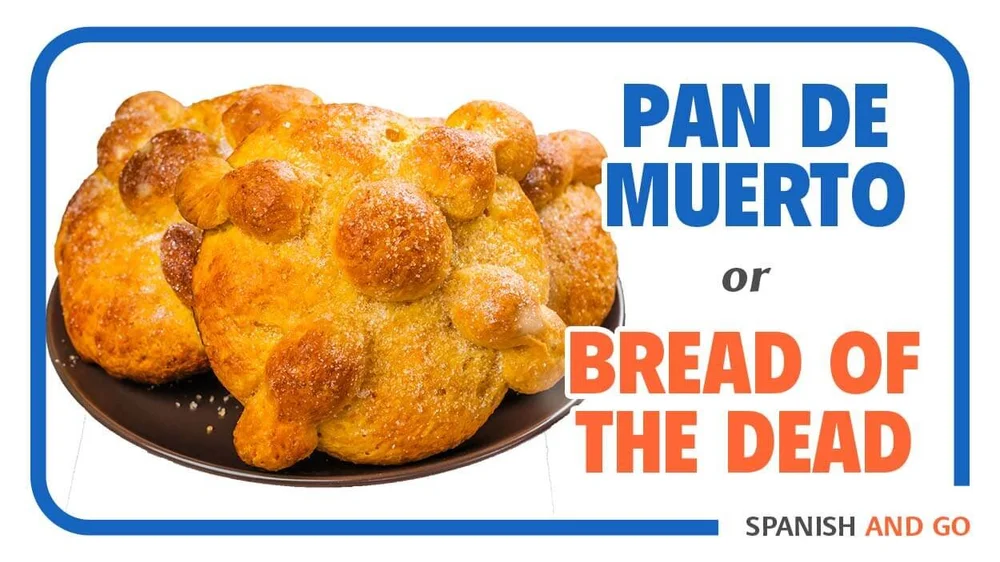
Do Mexicans celebrate Halloween?
They do. They have the “Día de Brujas,” which is the “Day of the Witches.” It’s basically like Halloween, just with a different name. Children dress up and go trick-or-treating and adults also dress up and go out or watch horror movies at home. It’s celebrated on October 31st, just like Halloween.
Where is the Day of the Dead celebrated?
The Day of the Dead is celebrated everywhere in Mexico. No matter where you go, there will always be something going on for Day of the Dead. Our travel experience for the Day of the Dead in Michoacan is remarkable because of the Monarch Butterflies. But some of the biggest celebrations in Mexico take place in the states of Michoacan, Oaxaca, and Mexico City.
It’s also a celebration that takes place in other countries too, such as Ecuador and Brazil.
In the United States, the Day of the Dead is celebrated in places where there are big Mexican communities, such as:
- Hollywood Forever Cemetery, Los Angeles, California
- Day of the Dead San Diego, San Diego, California
- Muertos Fest, San Antonio, Texas
- Florida Day of the Dead, Fort Lauderdale, Florida
- Muertos y Marigold Parade, Albuquerque, New Mexico
- Day of the Dead Festival of Altars, San Francisco, California
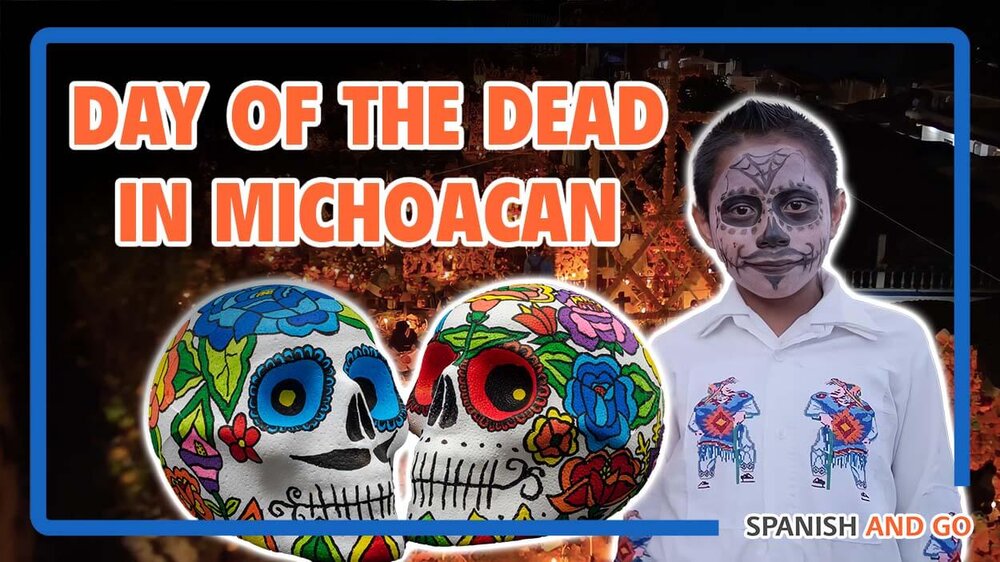
Best Tips for Celebrating the Day of the Dead
To experience an authentic Day of the Dead, visit any of the cemeteries in the country. That’s where everyone will be spending the day (and night).
Also, be sure to visit any of the main squares in whatever city you’re in because that’s where the altar competitions take place, where different schools get together and groups of students decorate an altar dedicated to an important person.
Frequently Asked Questions About Day of the Dead
How Was the Day of the Dead Created?
Day of the Dead is a syncretic holiday that is a mix of Native Mesoamerican traditions and the Christian traditions of All Saints Day (November 1st) and All Souls Day (November 2nd).
The Mesoamerican aspect of the tradition dates back to pre-colonial times (perhaps even as early as 1500 BCE) when the Aztecs of what is now known as Central Mexico used skulls to commemorate the dead. But the modern tradition of Day of the Dead as we know it did not truly form until the arrival of the Spanish in modern-day Mexico in the 16th century.
The arrival of the Spanish resulted in moving the dates of some of the indigenous traditions to overlap with the Christian holidays mentioned about.
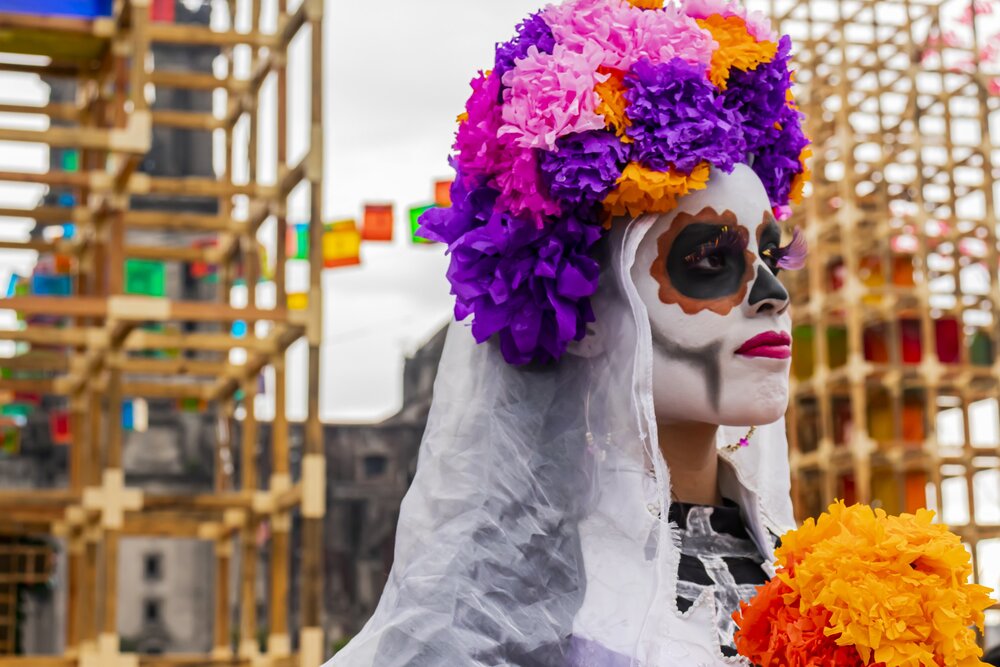
What is the Flower of the Dead?
The “flower of the dead” is known as cempasuchil in Spanish. This Mexican variety of marigolds (Tagetes erecta), are also known as “Aztec marigold.” They serve an important role during the tradition as they are believed to help guide the deceased to the land of the living with its vivid colors and pungent scent.
What is the meaning of the Mexican Painted Skulls?
Sugar skulls are ubiquitous around Day of the Dead, and they are the evolution of a much less “cute and colorful” tradition and sugar skulls are used for the Day of the Dead. Prior to the arrival of the Spanish in Mesoamerica, the Aztecs and Mexicas were known for constructing something called a tzompantli or Skull Rack. This was used for the public display of human skulls, typically those of war captives or other sacrificial victims.
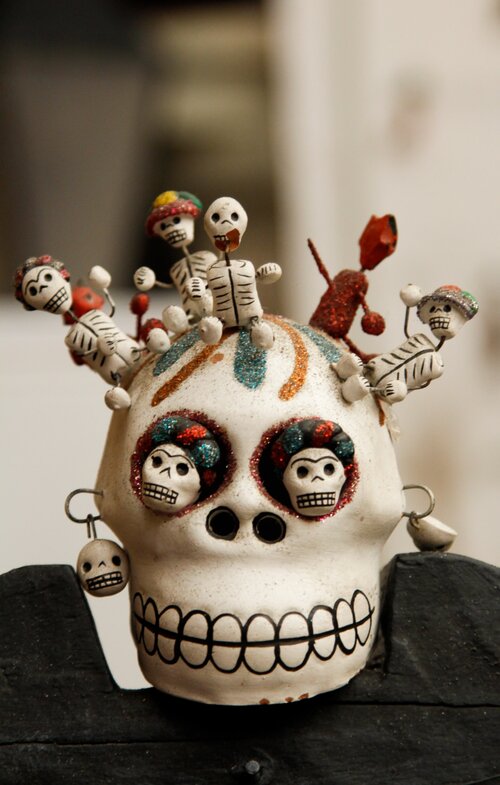
The Spanish saw this as barbaric and tried to put an end to the practice of using human remains in this way. While the Spanish were never able to completely dissolve the tradition, they did influence it by moving both the date Day of the Dead was celebrated to coincide with All Saints Day, and push to “modernize” the holiday by replacing the real skulls with sugar skulls.
Does it Cost Money to Take Part?
For most public celebrations of Day of the Dead in Mexico, observing the festivities costs nothing. For the price of getting to the destination of your choice, you can generally watch the local parades or enter the cemeteries for free. But you’ll certainly want to bring enough pesos to enjoy some delicious food while you’re there.
Is Day of the Dead Religious?
Yes and no. As mentioned above, the Day of the Dead is a mix of traditions from two separate cultures. However, the actual celebration seems to favor more indigenous traditions over Christian ones, even though the celebration corresponds with All Saints Day and All Souls Day.
Mexico is a mostly Catholic country, and most holidays involve the church to some extent, which makes the Christian influence impossible to ignore, even if it’s mostly the dates that overlap.
How long is the Day of the Dead?
Day of the Dead is officially two days long, starting on November 1st, and ending on November 2nd. However, most altars are prepared leading up to these dates, and you can see many finished or nearly finished altars on display in Mexico on October 31st.
***
The Day of the Dead, once a small national tradition, has evolved into a massive driver of tourism as people from all around the world come to celebrate and take part in the festivities. Over 7.5 million people visit Mexico each year to take part in this special day. It’s one of the most memorable, unique festivals in the world. Don’t miss your chance to take part!
Want to learn more about this holiday while practicing your Spanish? Check out episode 28 fo the Learn Spanish and Go Podcast.

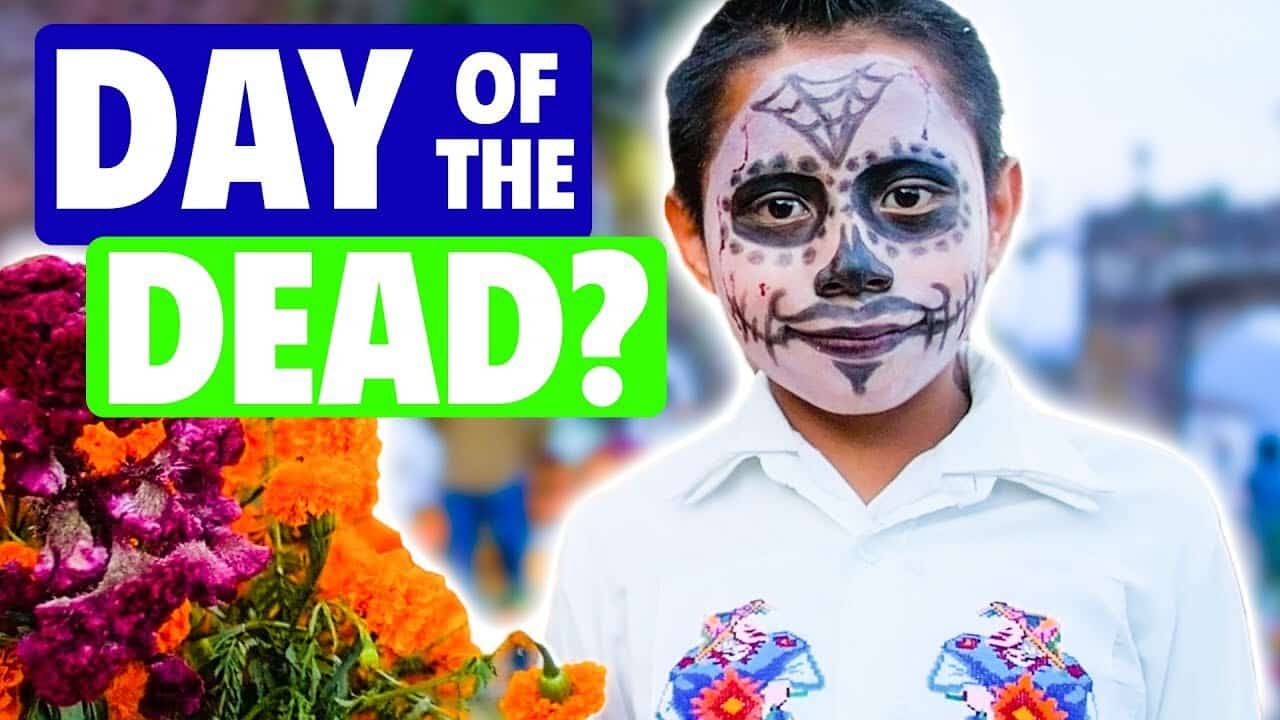
Related Posts
12 Things You Should Never Do in Mexico [Tourists: Take Note!]
7 Must-See Attractions in Mexico City’s Historic Center
The 16 Best Things to Do in Barcelona